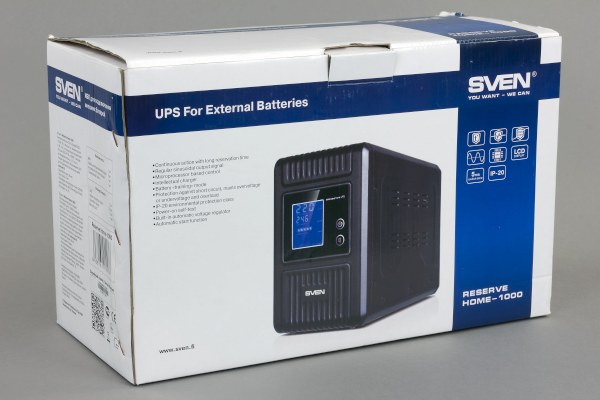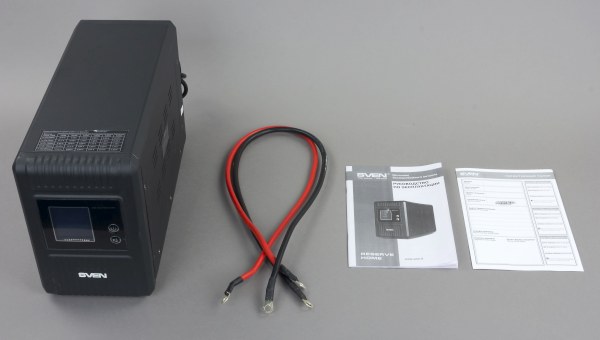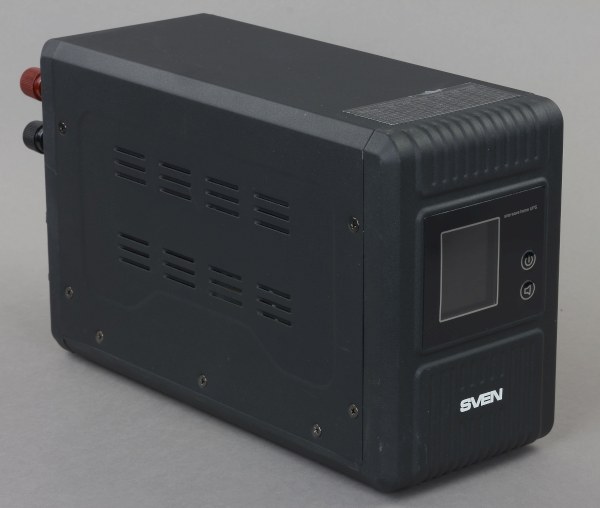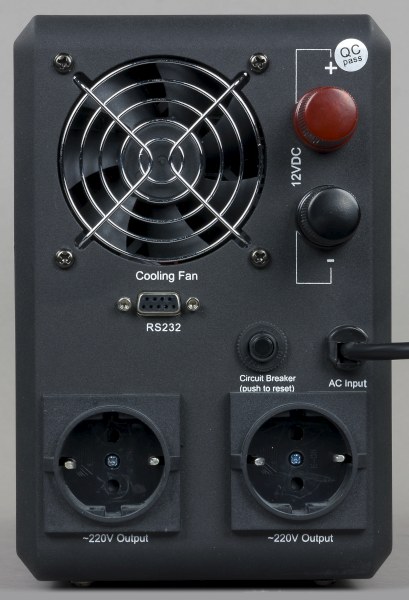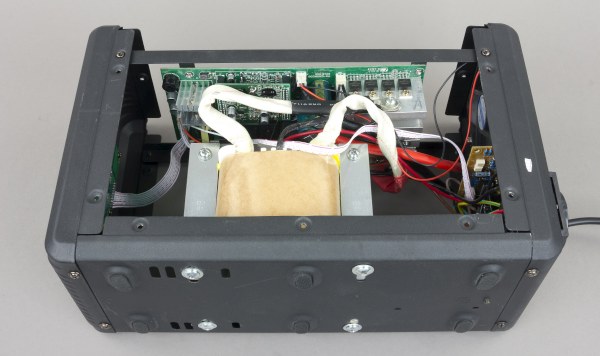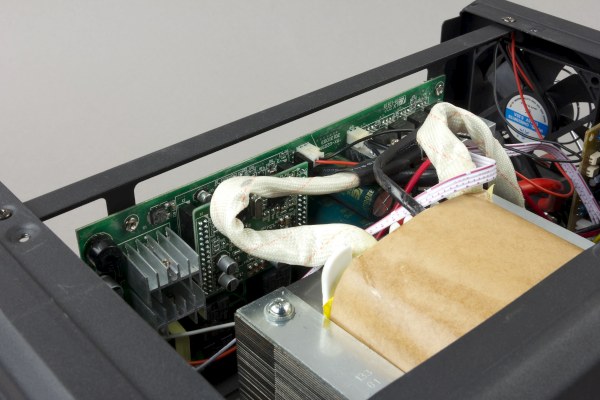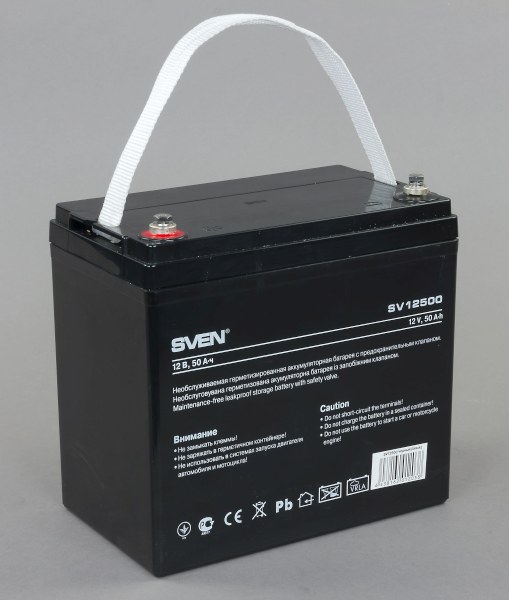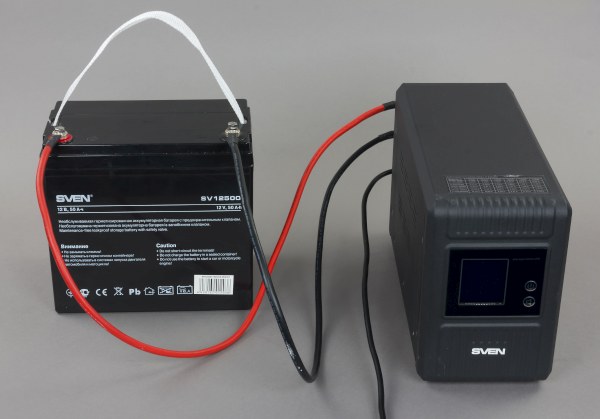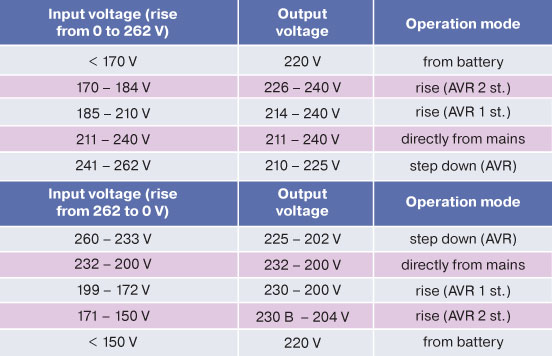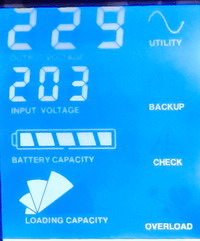Amateurs of the “smart house” conception, as well as wider circle of users of the indirect heating system of a private house, as a rule, have to care of the uninterrupted power supply of their equipment, especially those people, who live in Russia and CIS countries, where behind the line of metropolises it is still difficult to rely on the uninterrupted energy supply. And even the power cutoffs are not so often, the risk to damage expensive equipment compels to secure against such cutoffs.
The task becomes complicated, because the sinusoidal waveform of output voltage is required for the same pumps and, in particular, for electric firing systems. But the majority of UPSs, which provide the sinusoidal waveform of high quality, belong to the class of online devices with double transformation and, accordingly, their price is considerable. At that devices with built-in batteries provide, as a rule, short-time protection only, which is sufficient to turn off the protected equipment only. In the meantime power cutoffs in rural localities can last for several hours and even to reach to several days (for example, till the maintenance personnel will remove a tree fallen on wires and restore the power line).
The device being considered in this review is dedicated to satisfy the demand just in such situations. It combines scarce qualities: voltage sinusoidal waveform during battery operation, AVR availability, with a wide range of input voltages, and a possibility to choose a battery on your own, the capacity of which can reach “unchildish” 200 A•h.
Specifications
We have tested a senior model – Reserve Home-1000 (1000 VА). There are also versions with a capacity of 500 and 800 VА in the line 500 and 800 VА.
Package content and warranty
Package content:
- Operation Manual
- warranty card
- two cables to connect the battery
Warranty period is 2 years
Appearance
The UPS has classic “tower” arrangement and quite compact case, but very heavy for a device without the built-in battery – the presence of a heavy transformer affects and that fact can only gladden a knower. There is an on/off button, alarm stop button and LCD screen on the front panel.
There are 2 standard euro sockets, terminals to connect the battery and “ancient” RS232 interface on the rear panel, which can disappoint persons interested to use this UPS with a computer. USB is not provided. An automatic safety fuse is envisaged for protection against overload and short circuit.
Interior
As we might expect, there is quite a lot of free space in the case. The transformer occupies a lower half and the board is located above. A fan is used for cooling; therefore the device is not noiseless. And the noiseless isn’t the word for it – in reality the sound level rules out the possibility of using this device close to the working place, because in our measurements (at a distance of 0.5 m) the sound level in different modes made from 52 to 62 dBA. At that the operation logic of the cooling system cannot be named optimal – the fan starts and operates on high speed from time to time, even when the connected battery is charged and there is no connected load at all to the UPS.
The second shortcoming, which has been revealed practically immediately after the package opening... is smell. The device, definitely, does not ozonize a room, where it is placed. It is difficult to say what the main source of the smell is: plastic, paints or something else, but it is doubtful whether this feature will gladden anybody in a home accommodation.
МеMeanwhile, it cannot be said that some cheap components of bad quality are used in the device. Mechanical relays are responsible for switching between AVR stages rated at the peak current 10 A, that means the considerable margin of safety. International Rectifier IRF3205 transistors also belong to transistors, which gave a good account of themselves in many other models of different producers.
Battery
A user can purchase any battery with the voltage 12 V and capacity from 50 to 200 А•h. Sven Company offers batteries too with its brand and gave model with a capacity of 50 А•h to us for testing. Well, let us test the device from the point of view of minimum possible backup duration.
The completed system for a user will look approximately like this.
Testing
Power supply network operation
We have used an adjustable-ratio autotransformer (laboratory transformer) to define switching thresholds and actual voltage at outputs with the input voltage in the range between 0 and 262 V. The device has been tested with the completely charged battery and connected active load equal to approximately 100 W.
The voltage range supplied to the input during operation in the AVR mode does not exceed the declared deviation in 10 %. It is quite nice that the device remains stable and provides the voltage, which is knowingly sufficient for normal operation even of the most capricious equipment, when the voltage steps down to 150 V.
Switching speed between stabilizing stages and transition to the battery operation is very high (within declared limits 5 ms).
Battery operation
When the voltage is beyond the mentioned range, UPS goes to the battery operation. The battery operation is accompanied by quite loud audible signal, 4 beeps one time per 30 seconds. The alarm is turned off with the button on the front panel, but the UPS does not memorize this setting and at the next cycle the device will again “scream for help” insistently. After reaching the discharge critical level the alarm is not turned off any more and the UPS beeps constantly. If there is an emergency power cut due to the discharged battery, the device will continue to call its owner even with more offensive trills.
On the one hand, it is logical that if we provide power supply to the equipment critical to the voltage absence, the alarm is needed. On the other hand, I would personally prefer that the alarm in normal battery operation mode is turned off entirely. Because if we have purchased a source with long backup time, it means that the input voltage disconnection as such is not an out of the ordinary event. So, why to make noise in this connection?
The battery operation time with the load of 550 W has made 25 minutes, starting from the 23-th minute the device has already started to alarm about critical discharge. This is a little bit inconsistent with the declared (in a sticker on the device lid) “approximately one hour” operation with the maximum load from a 50 ampere battery. When 100 W load had been connected, the device held out 3 hours and 2 minutes and the alarm started to beep, when the timer displayed 2: 55. It has been already nearer to the declared 3 hours and 41 minute, but a difference was available all the same.
We can say, of course, that we had not the best or not “fired up” battery. On the other hand, a battery has also a property to discharge in the course of time. Therefore, from the practical point of view it is better to focus on the “unfired up” results.
Results were measured in 5 charging-discharging cycles; the averaged result is given above.
The battery of this capacity is charged for 5-8 hours depending on the discharge mode.
The output signal quality in different modes is given in oscillograms:
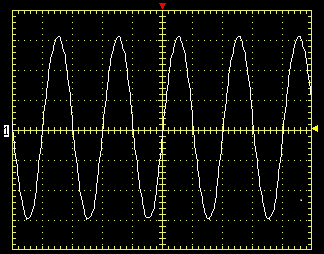
Mains reference sinusoid (230 V) |
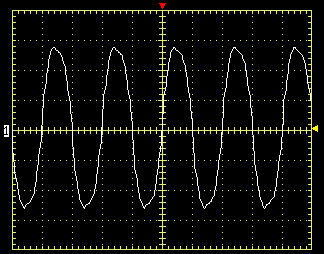
Operation in AVR mode |
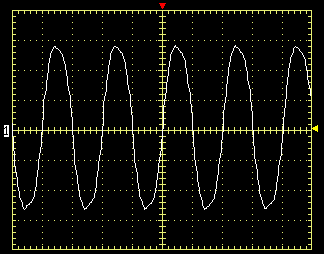
Battery operation |
The ideal result! The device does not clutter up the sinusoid during operation in AVR mode, as it was recently during testing models of very prominent producers. The sinusoid form does not depend on a load and the battery charge level. We have nothing to add here.
Interface and software
The UPS does not have a USB port, but it is doubtful whether somebody will use the out-of-date COM port for connection to the computer. Most likely the producer meant the use of some industrial comptrollers, because the COM port is also not the most popular interface in the smart home systems.
It only remains to focus on the built-in display. And, in principle, the whole necessary information is available there – the input and output voltages are monitored quite precisely and you can estimate a displayed battery charge level, as well as a load level.
Conclusions
There is no doubt that this is a niche device, which does not pretend to mass demand. Though, it would catch fancy of much more number of people who simply want to secure their equipment in case of the long power-off – if it were not for the high sound level and specific smell. Therefore, it is hardly probable that somebody will tolerate this UPS close to the working place, and not everybody has in his ordinary apartment a separate storeroom or “server”, where these shortcomings will worry nobody. On the other hand, in conditions of a private house it is not a problem, because the equipment protected by such UPS requires a separate room in itself.
Advantages:
- output voltage sinusoid of high quality
Disadvantages:
- no USB port
- noisy fan

